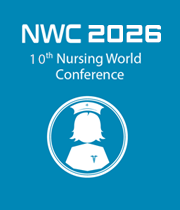Title : Effectiveness of a multi-layer silicone-adhesive polyurethane foam dressing as prevention for sacral pressure ulcers in at-risk in-patients: Randomized controlled trial
Abstract:
OBJECTIVE: To study whether a multi-layer, silicone-adhesive polyurethane foam dressing shaped for the sacrum prevents pressure ulcers (PUs) development in addition to standard PUs preventive care for high-risk hospitalized patients.
DESIGN: Open-label, parallel group, multi-center randomized controlled trial.
SETTING: 25 medical, surgical, and intensive care units of 12 hospitals (three Research Institutes, three large-size teaching hospitals and six small-size to large-size public general hospitals), Italy.
PARTICIPANTS: 709 in-hospital patients at risk for PUs. 351 were randomized to a sacral multi-layer silicone-adhesive polyurethane foam dressing and 358 to standard PUs preventive care.
INTERVENTIONS: A multi-layer silicone-adhesive polyurethane foam applied to the sacrum in addition to standard PUs preventive care (intervention group), or standard preventive care alone, including systematic PU risk assessment, skin assessment three times per day, routine positioning every 4 hours, use of active support surface as appropriate, incontinence skin care (control group).
MAIN OUTCOME MEASUREMENTS: Primary outcome was incidence of sacral PUs of any stage at seven days from hospital admission. Secondary outcomes were incidence of sacral PUs ≥ II stage, number of days needed to PU development, number of skin adverse events due to the foam dressing, number of dressings used for each patient, number of withdrawing patients due to discomfort caused by the foam dressing. Participants were evaluated at baseline and at seven days.
RESULTS: Overall, 46/358 (12.8%) controls and 17/351 (4.8%) in the intervention group developed sacral PUs (p<0.001; absolute PUs reduction 8%; number needed to treat (NNT) for benefit 12.5, 95% CI 8.2 to 25.8). In patients admitted to medical units, 15/113 controls and 4/118 in the intervention group developed sacral PUs (p=0.010; absolute PUs reduction 9.2%; NNT for benefit 10.9, 95% CI 6.2 to 44.2). In patients admitted to surgical units, 21/144 controls and 8/142 in the intervention group developed sacral PUs (p=0.010; absolute PUs reduction 8.9%; NNT for benefit 11.2 95% CI 6.3 to 48.8). PUs incidence was not significantly different between the randomization arms (5.2% experimental vs 10.4% control, p=0.141) in patients admitted to intensive care units. Incidence of sacral PUs ≥ II stage did not differ significantly between the two groups.
In the intervention group, no adverse skin reactions and discomfort attributable to the foam application were reported. Mean number of dressings used to ensure 7 days of treatment was 1.7 dressings per patient.
CONCLUSIONS: A sacral multi-layer silicone-adhesive polyurethane foam in addition to standard PUs preventive care is effective for PUs prevention in high-risk hospitalized patients admitted to medical and surgical units. The evidence of the effect of the use of foam dressing in patients admitted to intensive care units was inconclusive.
Audience Take Away Notes:
- In the last decades, a growing interest in the use of advanced wound dressings, in particular of silicone-adhesive polyurethane foam dressings, as a PUs preventive strategy has been reported.
- Existing evidence on the effectiveness of silicone-adhesive polyurethane foam dressings pertains mainly to critical care patients, yet robustly designed studies on other patient populations are lacking.
- Silicone-adhesive polyurethane foam dressings are effective in preventing the development of sacral pressure ulcers in high-risk patients admitted to medical and surgical units.



